Understanding the Relationship Between Diet and Acne-Prone Skin
Are you wondering, “What do I need to cut out of my diet if I have acne-prone skin?” At Shellharbour Skin, we understand that dietary choices are often discussed in relation to skin concerns like acne. Instead of total exclusions, we can discuss smart swaps that may be considered for lowering your glycaemic index and supporting your skin’s appearance.

Understanding Diet and Its Relationship with Acne
A low GI diet is a strategy often discussed in relation to acne-prone skin. The glycaemic index (GI) measures how quickly carbohydrates convert to glucose. High GI foods can cause rapid blood sugar spikes, which are factors that some studies have associated with inflammatory processes and the appearance of acne.
For more details on the glycaemic index and its effects, visit the American Academy of Dermatology.
Top Swaps to Lower the Glycaemic Index of Your Diet
Rather than cutting out foods completely, consider these swaps, which are examples of ways to reduce your dietary GI:
| High GI Foods | Medium GI Alternatives | Low GI Choices |
|---|---|---|
| White bread | Wholemeal bread, pita, rye | Grainy bread, low GI white bread |
| Corn flakes, instant oats | Weet bix, sultana bran, Just Right | Traditional oats, All Bran, muesli |
| Jasmine rice | Cous cous, basmati, long grain rice | Pasta, rice noodles, quinoa |
| Water crackers, rice cakes | Ryvita, milk arrowroot | Vita wheats, Jatz, Snack Right Fruit Slice |
| Watermelon | Rockmelon, pineapple, sultanas | Apple, pear, banana, dates, peach, cherries |
| White potato | Mashed potato with butter or milk | Sweet potato, corn, legumes |
| Rice milk | Vaalia yoghurt drink | Cow’s milk, yoghurt, custard, soy milk |
How Food Combinations Can Impact the Glycaemic Index
The GI of a food can change depending on what it’s eaten with. Adding fats or proteins to carbohydrate-rich foods slows digestion and lowers the overall GI. For example, white potatoes mashed with milk or butter have a lower GI than when eaten alone. Adding avocado to crackers or cooking potatoes with olive oil are other examples of this principle.
Rounding out meals with protein, vegetables, and healthy fats can contribute to a balanced diet and also helps reduce the glycaemic load. This is an important consideration for those exploring the relationship between diet and their skin.
Dairy, Chocolate, and Their Role in Diet and Acne
Dairy Foods
Research suggests that plain cow’s milk (not cheese or yoghurt) is sometimes associated with a higher incidence of acne. Since many people look to dairy for their calcium needs, cutting it out entirely may not be the first option. Instead, you might consider calcium-fortified alternatives like soy or almond milk and observe if this change corresponds with any changes in your skin’s appearance.
Chocolate
The evidence regarding chocolate is unclear. Although chocolate can be both high GI and dairy-containing, some studies suggest that stress may be a more significant factor associated with the appearance of acne than chocolate itself. Incorporating stress-reduction techniques, such as mindfulness or deep breathing, can be a positive part of a general wellness routine, which may in turn support your skin’s overall appearance.
Expert Guidance on Diet and Acne
Making dietary changes can be challenging. When you remove certain foods, you may need to replace them with nutrient-dense alternatives. For personalised advice on diet and its relationship to your skin, consult an Accredited Practising Dietitian who can help design a balanced eating plan.
Ready to Discuss Your Skin Concerns?
Discover more about our skincare consultations and how we can support you in understanding your options:
Learn More About Our Skincare Consultations Book Your Complimentary Consultation Today
Additional Resources
American Academy of Dermatology – Learn more about the impact of diet on skin health from a trusted authority.
- Diet and Acne: a systematic review. JAAD International Vol 7, June 2022, pg 95-112. James Meistion et al
- http://www.glycemicindex.com
- The effect of a high-protein, low glycemic–load diet versus a conventional, high glycemic–load diet on biochemical parameters associated with acne vulgaris: A randomized, investigator-masked, controlled trial Robyn N. Smith, BAppSc (Hons) Neil J. Mann, BSc (Hons), BAppSc, PhD Anna Braue, MBBS, MMed Henna Mäkeläinen, BAppSc George A. Varigos, MBBS, FACD, PhD Published:April 20, 2007DOI: https://doi.org/10.1016/j.jaad.2007.01.046
The effect of personal, familial, and environmental characteristics on acne vulgaris: a prospective, multicenter, case controlled study Ayşe S Karadağ 1, İlknur Balta 2, Hayriye Saricaoğlu 3, Selim Kiliç 4, Kıymet H Kelekçi 5, Mehmet Yildirim 6, Deniz A Arica 7, Savaş Öztürk 8, Göksun Karaman 9, Aslı A Çerman 10, Serap G Bilgili 11, Enver Turan 12, Mustafa M Demirci 13, Tuğba K Uzunçakmak 14, Serdar C Güvenç 15, Arzu Ataseven 16, Ayten Ferahbaş 17, Berna Aksoy 18 19, Emine Çölgeçen 20, Özlem Ekiz 21, Filiz T Demir 22, Özlem Bilgiç 23, Seray Çakmak 24, Derya Uçmak 25, Pınar Özuğuz 26, Yeşim K Konkuralp 27, Aylin T Ermertcan 28, Gonca Gökdemir 29, Emel B Başkan
Written by Fiona Gordon – from Savouring Nutrition

If you have a question, get in touch and one of our staff will be in touch shortly.
- Consultations for Skin Tag Removal in Shellharbour
- Alma Hybrid CO2 Laser – Expert Insights from a Dermal Clinician
- How Do I Effectively Treat Hyperpigmentation? Expert Advice from Shellharbour Skin
- How Can I Keep My Skin Glowing During Menopause? Expert Tips for Radiant, Healthy Skin
- Why Skin Quality and Volume Change, and What That Really Means





